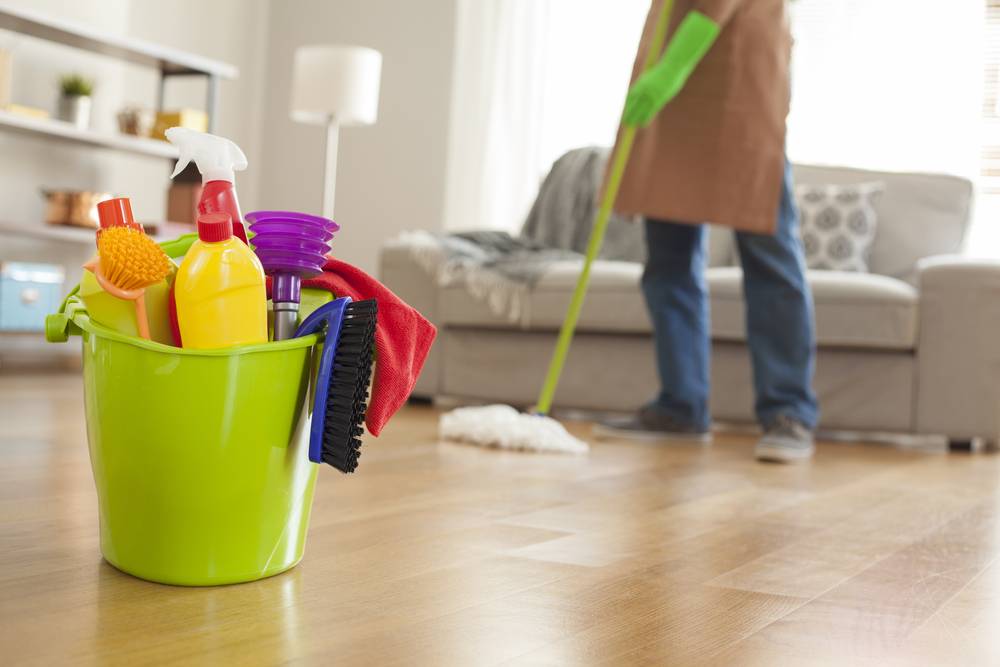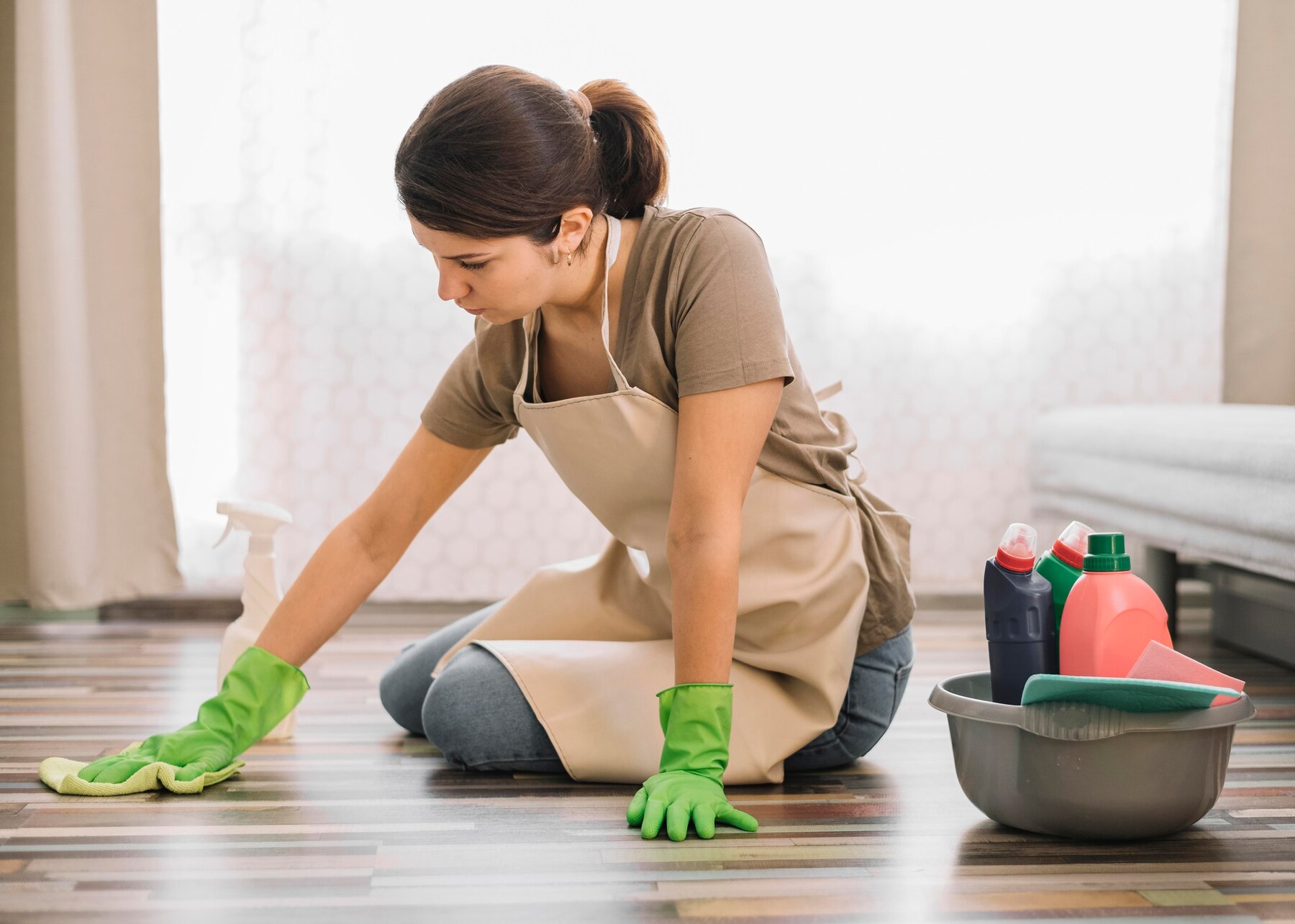Accomplish a Cleaner Home with These Everyday Cleaning Tips: Defrosted and Cleaned Every Few Months and Even more
Accomplish a Cleaner Home with These Everyday Cleaning Tips: Defrosted and Cleaned Every Few Months and Even more
Blog Article
Understanding the Requirement for Extensively Sanitizing and Disinfecting Frequently Touched Surfaces in High-Traffic Locations
In the realm of public health and safety and security, the thorough sanitation and sanitization of regularly touched surface areas in high-traffic areas stand as critical steps in avoiding the spread of hazardous pathogens. By exploring the numerous elements of surface disinfection, from the threats linked with ignoring cleaning protocols to the reliable techniques that can be utilized, a more clear understanding arises of the crucial role these techniques play in protecting public wellness.
Relevance of Surface Area Disinfection
Stressing the complete disinfection of high-traffic surfaces is critical in maintaining a hygienic atmosphere and protecting against the spread of dangerous pathogens. High-touch surface areas such as door manages, light switches, lift buttons, and kitchen counters act as reproducing premises for infections and bacteria. Normal disinfection of these surface areas is important to reduce the danger of contamination and transmission of health problems.
By executing a robust disinfection method, organizations and organizations can create a safer atmosphere for clients, staff members, and visitors. Appropriate surface area disinfection not only alleviates the spread of contagious diseases yet likewise instills confidence in the sanitation and safety of the premises. This proactive method demonstrates a commitment to wellness and wellness, which is specifically vital in high-traffic locations where the chance of direct exposure to microorganisms is heightened.
In addition, surface area sanitation plays a vital role in total infection control strategies. Combined with hand health methods, wearing masks, and preserving physical distancing, comprehensive disinfection of high-touch surface areas creates an extensive protection versus the transmission of damaging microorganisms. Prioritizing surface area sanitation is a crucial element of an alternative technique to health and safety and security in shared spaces.
Dangers of Neglecting Cleansing Practices
Disregarding comprehensive sanitation of high-traffic surface areas significantly increases the risk of bacterial and viral contamination, posing a major hazard to the health and wellness of individuals often visiting these rooms. Failing to execute correct cleaning practices can result in the buildup and spread of dangerous pathogens, including viruses and microorganisms, on often touched surfaces such as doorknobs, hand rails, lift buttons, and countertops.

In addition, ignoring the importance of detailed cleansing not only endangers the well-being of people however also weakens efforts to preserve a clean and sanitary environment. It is vital to acknowledge the value of appropriate sanitation procedures in preventing the spread of infections and securing public wellness.
Efficient Sanitation Methods
To keep ideal cleanliness and lower the threat of contamination on high-traffic surface areas, using effective sanitation approaches is necessary. One of the most effective and common disinfection techniques is making use of chemical disinfectants. These items can differ in strength and structure, with some targeting details pathogens like germs or infections. It is vital to adhere to the producer's directions for correct dilution, contact time, and ventilation when utilizing chemical anti-bacterials to guarantee their effectiveness - defrosted and cleaned every few months.
An additional reliable method is using UV-C light. UV-C light has been shown to check this site out be efficient in killing a large variety of microbes by interrupting their DNA framework, therefore avoiding them from duplicating. Nevertheless, it is crucial to make use of UV-C light properly, ensuring that the correct intensity and direct exposure time are put on attain the preferred disinfection results.
Additionally, using vapor cleaning as a sanitation method can be very efficient, especially on surface areas that are heat-resistant. Heavy steam can pass through porous surface areas and kill microorganisms, viruses, and various other microorganisms effectively. When utilizing steam cleansing, it is important to make certain that the surface gets to the required temperature level for a sufficient amount of time to assure appropriate sanitation.
Effect On Public Wellness
The maintenance of high criteria of cleanliness and disinfection on high-traffic surface areas plays an important duty in protecting public health. Often touched surfaces in locations with high step, such as doorknobs, handrails, lift switches, and washroom centers, function as breeding premises for harmful microorganisms. Falling short to sufficiently decontaminate these surface areas can result in the fast spread of transmittable diseases within communities. By carrying out thorough disinfection procedures, the danger of transmission of viruses, germs, and various other bacteria can be significantly decreased.
In high-traffic areas like airports, schools, healthcare facilities, and public transport systems, the influence of rigorous sanitation steps can not be understated. Focusing on the sanitization of often touched surfaces is an aggressive method to advertising public health and wellness and enhancing the safety and security of individuals in common areas.
Implementing Normal Cleaning Up Methods
Immediately setting up and adhering to a regular routine of cleansing procedures is paramount for preserving the sanitation and security of high-traffic surface areas. Regular cleansing procedures are important in protecting against the accumulation of bacteria and pathogens on often touched surfaces, particularly in locations with high foot web traffic. By implementing an organized technique to cleaning, companies can efficiently lower the risk of illness transmission and develop a much healthier environment for workers, consumers, and the public.
To establish an efficient cleansing schedule, it is important to recognize high-traffic locations that require regular interest. These locations might include doorknobs, see here now handrails, elevator buttons, bathroom centers, and shared equipment. Carrying out a regular cleansing regimen that targets these surfaces multiple times a day can substantially lower the spread of hazardous germs and infections.
In addition, utilizing appropriate cleaning representatives and anti-bacterials is vital to guaranteeing that surfaces are completely sterilized. Routine training of cleaning personnel on proper cleansing techniques and the relevance of adherence to the cleaning routine is likewise important in maintaining a sanitary setting. By prioritizing consistent cleaning methods, companies can advertise the wellness and health of people that engage with these high-traffic surfaces.

Conclusion
Finally, it is crucial to prioritize complete sanitation and sanitization of regularly touched surface areas in high-traffic locations to stop the spread of damaging microorganisms and preserve public health and wellness. Disregarding correct cleansing techniques can increase the risk of contamination and transmission of conditions. By implementing regular cleansing methods and making use of reliable sanitation techniques, we can produce a much index safer atmosphere for everyone (Scrub the Surfaces). It is critical to identify the relevance of preserving clean surfaces in high-traffic locations to make certain the health of the neighborhood.
In the world of public health and wellness and safety, the meticulous disinfection and sanitization of often touched surfaces in high-traffic locations stand as extremely important procedures in avoiding the spread of harmful virus. By checking out the numerous aspects of surface area disinfection, from the threats connected with neglecting cleansing protocols to the efficient methods that can be utilized, a more clear understanding emerges of the essential role these techniques play in protecting public wellness.Additionally, using steam cleaning as a sanitation method can be extremely effective, particularly on surface areas that are heat-resistant. When using heavy steam cleansing, it is essential to make certain that the surface reaches the called for temperature for an enough amount of time to ensure appropriate disinfection.
In final thought, it is crucial to prioritize detailed disinfection and sanitization of often touched surface areas in high-traffic areas to avoid the spread of harmful microorganisms and keep public wellness.
Report this page